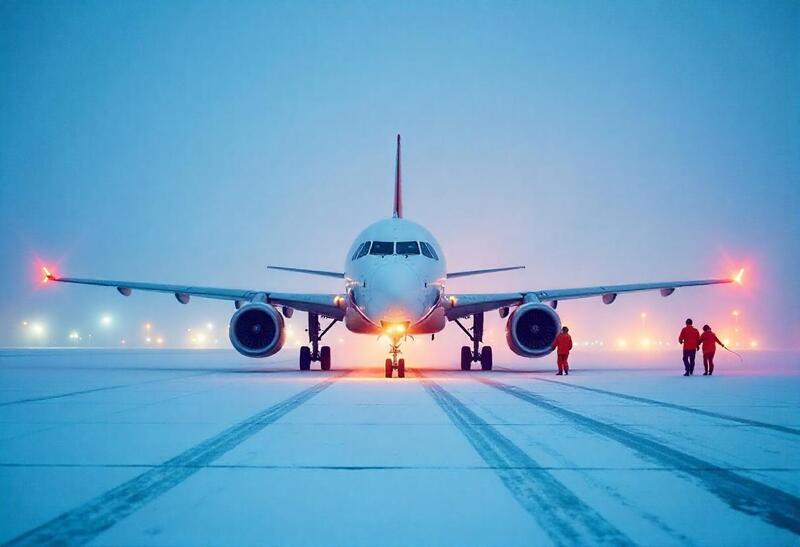
Israel is solidifying Haifa International Airport’s role as a vital regional aviation hub through Air Haifa’s strategic expansion of its fleet with a fifth ATR 72-600 aircraft. This growth enables the airline to increase direct flight frequencies and broaden connectivity to popular destinations such as Eilat, Cyprus, Larnaca, and Athens by the end of 2025. By focusing on northern Israel’s unique travel demands, Air Haifa is enhancing accessibility and convenience for local passengers who previously faced limited options. This fleet expansion not only boosts regional economic development and tourism but also strengthens sustainable air travel with efficient, environmentally friendly aircraft. As a result, Haifa International Airport is emerging as a key gateway that supports northern Israel’s integration into the broader domestic and international air network.
Operating out of Haifa International Airport, the airline aims to boost flight frequencies, open new destinations, and provide reliable, customer-centric services that address the specific travel needs of passengers from the northern region.
Advancing Regional Reach Amid Global Aviation Challenges
Despite continuing disruptions and regulatory complexities facing the global aviation sector, Air Haifa is actively pursuing expansion. Limitations on foreign carriers flying into Israel have created an opportunity for domestic airlines to fill essential service gaps—a role that Air Haifa is embracing through fleet growth and more extensive scheduling.
The addition of the new ATR 72-600 will give the airline increased flexibility to offer passengers a broader range of flight times and higher capacity, catering to rising demand for both domestic and nearby international travel.
Focusing on Northern Israel’s Distinct Travel Demands
Historically, northern Israel has been underserved by direct air travel options, with most flights routed through central airports closer to Tel Aviv. Air Haifa’s strategic growth seeks to provide tailored air travel solutions based in the north, improving accessibility and convenience.
This expansion reduces the need for residents to travel to distant airports, saving time and supporting regional economic and social development by strengthening transport links.
Collaboration and Workforce Drive Success
Air Haifa’s rapid growth is supported by a committed, skilled team working cohesively across flight operations, customer service, and ground handling. This collaborative effort ensures high standards of safety, operational efficiency, and service quality.
The airline also benefits from strong cooperation with aviation authorities and government agencies, which has facilitated regulatory clearances and operational support, enabling effective scaling at Haifa International Airport.
Navigating Constraints in Israel’s Aviation Environment
Due to operational restrictions affecting foreign airlines, domestic carriers have become increasingly vital in Israel’s aviation network. By expanding its fleet and route offerings, Air Haifa enhances the reliability and adaptability of air travel options for northern Israeli communities.
Why the ATR 72-600 Excels in Regional Aviation
The ATR 72-600 turboprop is valued for its fuel efficiency and capability to operate on shorter runways, making it well suited for regional routes. Operating a uniform fleet of ATR 72-600s simplifies maintenance and crew training while helping minimize environmental impact.
Passengers benefit from spacious, comfortable cabins with large windows providing panoramic views, enriching the flight experience on short-haul journeys.
Current Network and Future Expansion
Air Haifa currently connects northern Israel with popular destinations such as Eilat, Larnaca, and Athens. The new aircraft will enable the airline to increase flight frequencies on these routes and explore additional destinations that align with market demand and regional development.
Economic and Tourism Benefits for the Northern Region
Expanding operations at Haifa International Airport strengthens its status as a key regional transport hub, driving growth across tourism, hospitality, and transportation sectors.
Improved air access also promotes northern Israel’s cultural and natural attractions, encouraging sustainable tourism and economic development.
Commitment to Environmentally Responsible Growth
Operating the ATR 72-600 aligns with Air Haifa’s sustainability goals thanks to the aircraft’s lower fuel consumption and emissions relative to larger jets. The airline is expected to continue adopting environmentally friendly practices as part of its growth strategy.
Conclusion
Adding a fifth ATR 72-600 aircraft represents a significant milestone in Air Haifa’s mission to enhance air travel from northern Israel. This fleet expansion promises passengers greater convenience, increased flexibility, and improved connectivity within the region.
Israel is strengthening Haifa International Airport as a key regional hub by adding a fifth ATR 72-600 aircraft to Air Haifa’s fleet, boosting direct flights and connectivity to Eilat, Cyprus, Larnaca, and Athens by the end of 2025. This expansion enhances northern Israel’s travel options, supports economic growth, and promotes sustainable regional aviation.
With a dedicated team and strong institutional partnerships, Air Haifa is well-positioned to lead the future of efficient, sustainable, and passenger-focused regional air service tailored specifically to northern Israel’s needs.
The post Israel Positions Haifa International Airport as Key Regional Hub with Air Haifa’s Fifth ATR 72-600 Aircraft Increasing Direct Flights and Connectivity to Eilat, Cyprus, Larnaca, and Athens by End of 2025 appeared first on Travel And Tour World.